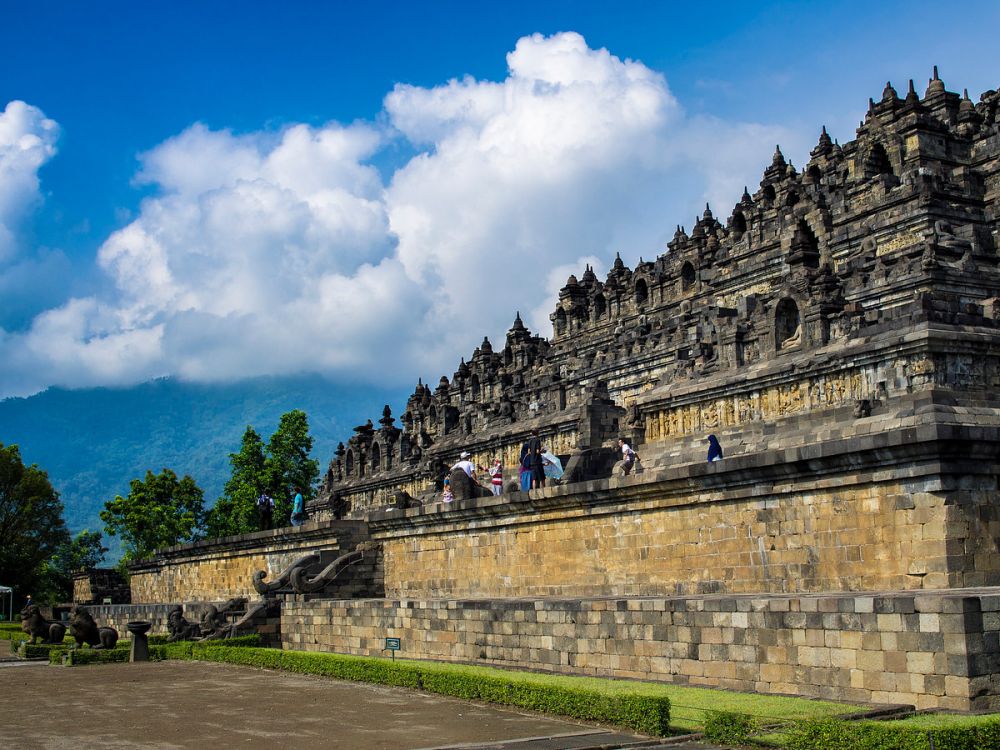

Borobudur Temple is a magnificent Buddhist monument that mirrors the long and profound history of Buddhism and its role in the area. Constructed in the 9th century during the reign of the Syailendra Dynasty in Central Java, Indonesia, it is one of the most significant Buddhist sites worldwide. The temple bears evidence to the cultural and religious fervor that characterized the region during this golden era of Buddhist art and architecture.
Tourism to Borobudur Temple began in earnest during the Dutch colonial period in Indonesia. The colossal monument, which had been abandoned and concealed by volcanic ash and jungle growth since the 14th century, was rediscovered in the 19th century by Sir Thomas Stamford Raffles, the then British ruler of Java. Following its restoration initiated by the Dutch government, the temple started to attract scholars, historians, and travelers from around the globe.
The major breakthrough in Borobudur's tourism history occurred in 1991 when UNESCO officially recognized the temple as a World Heritage Site. This acknowledgment not only reinforced the temple's status as a key destination for cultural and archaeological tourism but also initiated further efforts to preserve and protect the monument for future generations.
In contemporary times, Borobudur has witnessed significant transitions in tourism trends. The site has become more than just a pilgrimage destination—it is now a symbol of Indonesia's rich cultural heritage that draws millions of visitors each year. Technological advancements have made Borobudur more accessible and have facilitated immersive experiences such as virtual reality tours and augmented reality applications that enhance the educational aspect of visiting the site.
Additionally, sustainable tourism practices are being increasingly adopted to ensure the site's preservation. The Indonesian government and various organizations focus on balancing visitor experiences with conservation efforts by limiting daily visitor numbers and promoting environmentally friendly tourism.
Borobudur Temple's tourism history is continuously evolving. The Indonesian authorities are investing in infrastructure and amenities to improve accessibility and the overall visitor experience. Festivals and events centered around the temple, such as the Vesak Day celebrations, continue to boost its appeal as a dynamic and vibrant cultural site.
Looking ahead, it is clear that Borobudur will continue to solidify its position as a cornerstone of Indonesian tourism. With ongoing initiatives aimed at responsible tourism and conservation, Borobudur is poised to offer a timeless journey through history while adapting to the changing tides of global travel trends.